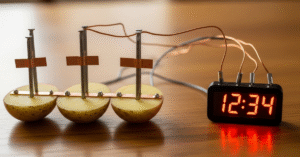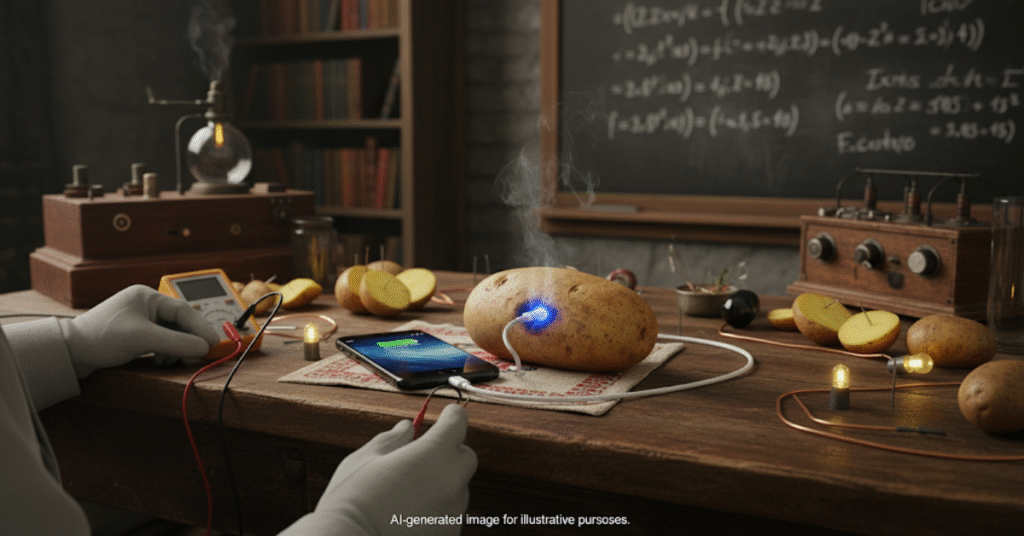The Science Behind a Potato Battery
The idea of charging a phone with a potato is a famous myth that you’ve likely seen on social media. While a single potato can’t power your phone, it can act as a key ingredient in a simple battery. The potato itself doesn’t generate electricity. Instead, it serves as an electrolyte—a medium that helps in the flow of ions. When two different metals, like a zinc-plated nail and a copper wire, are inserted into the potato, a chemical reaction occurs. Electrons flow from the zinc (the negative terminal) to the copper (the positive terminal), creating a tiny electrical current.
Why a Potato Can’t Charge Your Phone

While this science experiment works for powering very low-voltage devices, like a small digital clock or a single LED light, it is nowhere near powerful enough to charge a modern smartphone. A typical potato battery produces only about 0.5 volts of electricity. A standard smartphone charger, on the other hand, needs at least 5 volts and a significant amount of current to function. This means you would need to connect hundreds of potatoes in a series to generate enough voltage, a feat that is not practical or efficient.
The Truth vs. The Myth
Many viral videos and online content show people “charging” their phones by simply plugging a USB cable into a potato. This is a complete hoax. These videos use hidden wires or power sources to create a fake result. The truth is that while potatoes are fascinating for simple science experiments, they are not a viable source of power for our high-tech gadgets. The real lesson here is not about charging phones, but about understanding the basic principles of electrochemistry and how batteries work.






